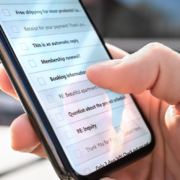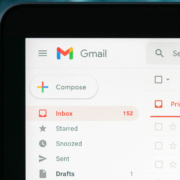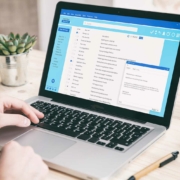Mastering the Different Types of Email Marketing
Email marketing is the smarter, faster, more targeted brother of postcards and brochures. Email lists, triggered email automation, and easy-to-use email templates allow you to save hours of specifically addressing and sending out mailers to your customers — because what small business has time for that?
Instead of licking a bunch of stamps, get direct access to the attention of both returning customers and new customers by using one (or many, many more) of these types of email marketing campaigns.
Table of Contents:
-
- Mastering the Different Types of Email Marketing
- Lead Nurturing Emails
- Dedicated Emails
- Email Newsletters
- Survey Emails
- Triggered Emails
- Welcome Emails
- Order Confirmation Emails
- Post-Purchase Drip Email Series
- Abandoned Cart Emails
- Re-engagement Emails
- Transactional vs. Triggered Marketing Emails
- Bring Us Along For the Ride
Lead Nurturing Emails
It’s not enough just to have a super long email list that you do nothing with. Lead nurturing emails help build a customer’s relationship with your brand — leading to purchases from both current and new customers. They are a great way to quickly inform a large number of customers about what’s going on with your business and anything special you have brewing.
Dedicated Emails
Dedicated emails are – as the name suggests – promotional emails dedicated to one single thing. It could be a new product, a service, or a special offer. It hypes up the customers about this one thing so that they’re super ready for the clear call to action (CTA) at the end.
Email Newsletters
Email newsletters are a great way to regularly keep your business top of mind and build brand awareness. You can include a great deal of content in a newsletter, such as celebrating important brand milestones, giving customers product updates or coupons, and providing notifications to keep existing customers up-to-date on everything you have going on.
Unlike dedicated emails, this marketing strategy doesn’t always come with a clear CTA (but we know people who can help with that).
Survey Emails
Happy customers = a happy business. And the surefire way to make sure your customers are happy is to listen to them. Emailing surveys out to your customers is an effective way to learn how satisfied they are with your business — and find ways to improve. The response rate for email surveys is particularly high, especially if you schedule them to send at the right time. Trust us; Monday morning is the sweet spot for email survey open rates and customer response.
Triggered Emails
These types of email marketing campaigns allow for more targeted content since they are directly related to what a customer is doing. Triggered emails are automated to send out a series of emails after a customer takes (or even fails to take) a specific action on your website. These can help engage customers all throughout their purchasing journey. From lead nurturing to re-engagement, triggered emails can help hook – and keep – customers.
Welcome Emails
Congrats! You’ve got a new subscriber. Now, the polite thing to do is to follow up with a friendly hello, right?
This is what a welcome email does, and it does this extremely well. With an 86% open rate and high click-through rates (CTR), a well-timed welcome email can help you make a great first impression and build brand awareness. It can also be the perfect opportunity to nurture the lead and offer them a discount code for even higher conversion rates. Don’t believe us? Check the metrics.
Order Confirmation Emails
Double congrats – a lead turned into a customer and took the plunge on your ecommerce store. This is usually followed by a transactional email (we’ll explain the difference shortly, we promise), such as order and shipping confirmations. This kind of follow-up email is often used as an opportunity to upsell — as long as you’re doing what’s best for the customer. You know exactly what they just ordered, so a follow-up email with related products that go well with their purchase is often a welcomed addition to their inbox.
Post-Purchase Drip Email Series
Why not take your follow-up email a step further and keep your brand and product top of mind with a post-purchase drip email sequence? These are timed and targeted emails that reach out to a customer with content related to their purchase. Did you just sell a customer an air fryer? Why not nudge them a few weeks later with some content marketing featuring a great recipe? Or cross-sell them the perfect basket for the bike they bought from you last month?
Abandoned Cart Emails
Let’s say a potential customer visited your ecommerce store, loaded up their shopping cart, and then failed to take that final click to convert them from lead to customer. Tragic and heartbreaking, but no reason to cry thanks to this type of email marketing tool. Abandoned cart emails (or cart abandonment emails if you’re feeling like Yoda) trigger for this very reason. They help remind your leads of all the great products they were one step from owning. After all, we can all be forgetful from time to time. Abandoned cart emails remind them to commit.
Re-engagement Emails
Speaking of being forgetful – what if a customer starts to forget all about you and all the valuable things you do? Hard to imagine, we know, but it can happen. No need to fear when you’ve got re-engagement emails automated to send out. When one of your email subscribers slacks in engagement, a re-engagement sequence of emails is designed to draw them back in with some extra targeted care and attention. Extra points if you include some kind of discount code to encourage them.
Transactional vs. Triggered Marketing Emails
We mentioned transactional and triggered emails earlier, and we can’t let you go without letting you know the difference between the two. This is important stuff – legal stuff, even! Transactional emails are barebones – no marketing included – that provide a customer with information about their recent purchase.
Not to say that transactional emails can’t help build brand awareness – they can! But if an email contains marketing materials, then customers need to opt-in to receive them by becoming email subscribers. This means that any emails that contain marketing materials have to have the option to opt-out through an unsubscribe link somewhere in the marketing material.
Different jurisdictions have different rules on what is and isn’t considered marketing material. Make sure when you hit send, you know what rules apply to your email marketing campaign.
Bring Us Along For the Ride
Learning how to use all these email marketing tools can be a lot. Not to mention all the A/B testing you should do to optimize your subject line and preview text. Don’t fret; Lift Marketing is here to send all types of email marketing for you — and whatever other digital marketing help you need! Go ahead and give us a call.








